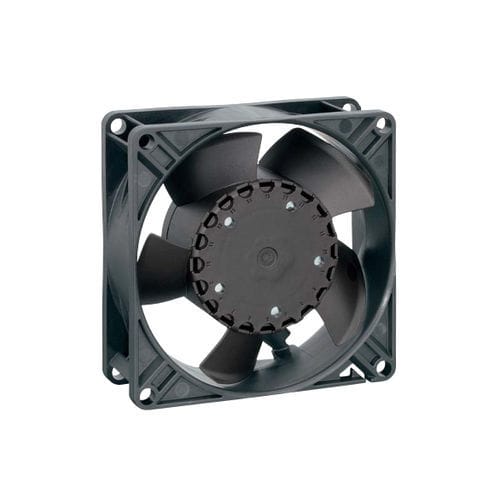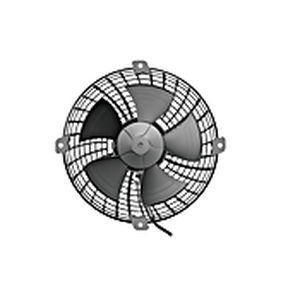
Axial fan 3314 NHexhaustDCelectrically-powered
Add to favorites
Compare this product
Characteristics
- Configuration
- axial
- Function
- exhaust
- Supply voltage
- DC
- Drive mechanism
- electrically-powered
- Material
- PBT
- Other characteristics
- compact
- Air flow
93 m³/h
(3,284.264 ft³/h)- Rotational speed
3,050 rpm
(19,164 rad.min-1)- Noise level
38 dB
Description
The truly space-saving ebm-papst axial fans are used to exchange hot and cold air in all sorts of devices and systems. Their outstanding features include a shallow installation depth, low noise level and excellent efficiency, making them particularly suitable for conveying air through heat exchangers.
With axial fans, which function similarly to a propeller, the air is conveyed in axial direction in parallel with the rotating motor shaft. The ebm‑papst external rotor motor is integrated directly into the axial impeller, forming a compact axial fan unit. For mounting, use is generally made of fan housings in short or long nozzles.
The combination of ebm‑papst GreenTech EC technology, intelligent sensors and control electronics turns the fans into smart solutions for all purposes. Whether condition monitoring, economical remote maintenance or automatic speed adjustment as contamination increases, ebm‑papst supplies everything from a single source for customized intelligent solutions.
• Weight : 0.19 kg
• Dimensions : 92 x 92 x 32 mm
• Impeller material : Glass-fiber reinforced PA plastic
• Housing material : Glass-fiber reinforced PBT plastic
• Airflow direction : Exhaust over struts
• Direction of rotation : Clockwise, viewed toward rotor
• Degree of protection : IP40
• Bearing : Ball bearing
• Service life L10 at 40 °C : 72.500 h
• Service life L10 at maximum temperature : 30.000 h
• Cable : with leads AWG 24 UL 1061, TR 64
Catalogs
Compact fans for AC, DC and EC
272 Pages
*Prices are pre-tax. They exclude delivery charges and customs duties and do not include additional charges for installation or activation options. Prices are indicative only and may vary by country, with changes to the cost of raw materials and exchange rates.




















































